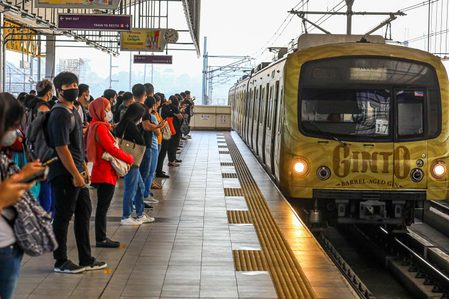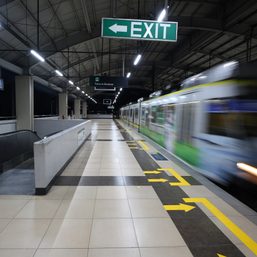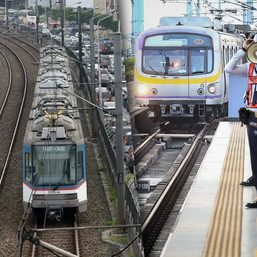SUMMARY
This is AI generated summarization, which may have errors. For context, always refer to the full article.

MANILA, Philippines – Commuters of the Light Rail Transit Line 1 (LRT1) can now go digital and use single journey QR tickets in all LRT1 stations through the Maya and ikotMNL app.
Users may scan the QR ticket – which is a QR code generated within the app – at the dedicated “fast lane” turnstiles. Each station has at least one or two turnstiles equipped with QR scanners. QR tickets may be used in any LRT1 trip from Baclaran to Roosevelt station.
“Naka-live na po siya. Every day, may mga system upgrades po tayo kung kailangan. Stable po ‘yung system at operational na ito,” said Juan Alfonso, LRMC president and chief executive officer on Thursday, May 25.
(It’s already live. We can do system upgrades every day if needed. The system is stable and operational.)
Here are the steps to buy a single journey ticket through Maya:
- In the Maya app, find the Services section.
- Click on the LRT1 button under the Lifestyle category.
- Enter your route (northbound or southbound), origin station, and destination station.
- Click on Pay Now to generate your QR ticket.
- Scan the QR ticket using the turnstile QR scanners at the station.
QR tickets are valid for 24 hours from the date of purchase. Maya also charges a P2 convenience fee for all ticket purchases.
Commuters can also buy LRT1 QR tickets using the Light Rail Manila Corporation’s (LRMC) ikotMNL app. Here are the steps:
- In the ikotMNL app, click the beep QR ticket button.
- Enter your route (northbound or southbound), origin station, and destination station.
- Select the mode of payment and purchase the ticket.
- Save or download the generated QR ticket.
- Scan the QR ticket using the turnstile QR scanners at the station.
The QR ticketing system is expected to cut the long queues for tickets that build up in train stations during the morning and evening rush hours.
“When you look at rush hour, sinong pumipila (who’s usually in line)? It’s usually the single journey [ticket] users. Hopefully, this will help reduce the burden on them,” said Cynthia Hernandez, Public-Private Partnership Center executive director. “That’s why you do PPPs, para makinabang ‘yung riding public (so that the riding public can benefit) from the innovations that the private sector can implement.”
LRMC clarified that beep cards and regular single journey tickets are still accepted in all turnstiles, including the fast lane turnstile. LRMC will also roll out an express lane – which starts at the entry and security inspection point – that will be exclusively for beep cardholders and QR ticket users.
LRT1 fare hikes?
Fare prices for the LRT1 may also soon be hiked. The Department of Transportation (DOTr) has already approved the adjusted fare prices, which would raise maximum fares for LRT1 single journey tickets from P30 to P35. But although the raise has been approved, the implementation of the fare hikes has been deferred indefinitely on orders from President Ferdinand Marcos Jr.
“We have no update on that information, but we’re closely coordinating with the DOTr if NEDA has questions. We’re ready to answer any questions,” Alfonso said.
“Basically, people do the PPP programs with an agreed contract with the government, and those entail those fare adjustments. That’s why you have fare adjustments with your toll roads, or your light rail, or any PPP type of partnership,” he added.
In the meantime, the LRMC is focusing on completing its Cavite extension project, which hopes to cut travel time between Baclaran and Sucat to 10 minutes. Alfonso estimates that the first five stations of the Cavite extension line – Redemptionist station, MIA station, PITX/Asiaworld station, Ninoy Aquino Avenue station, and Dr. Santos station – will be operational by September 2024. – Rappler.com
Add a comment
How does this make you feel?






There are no comments yet. Add your comment to start the conversation.